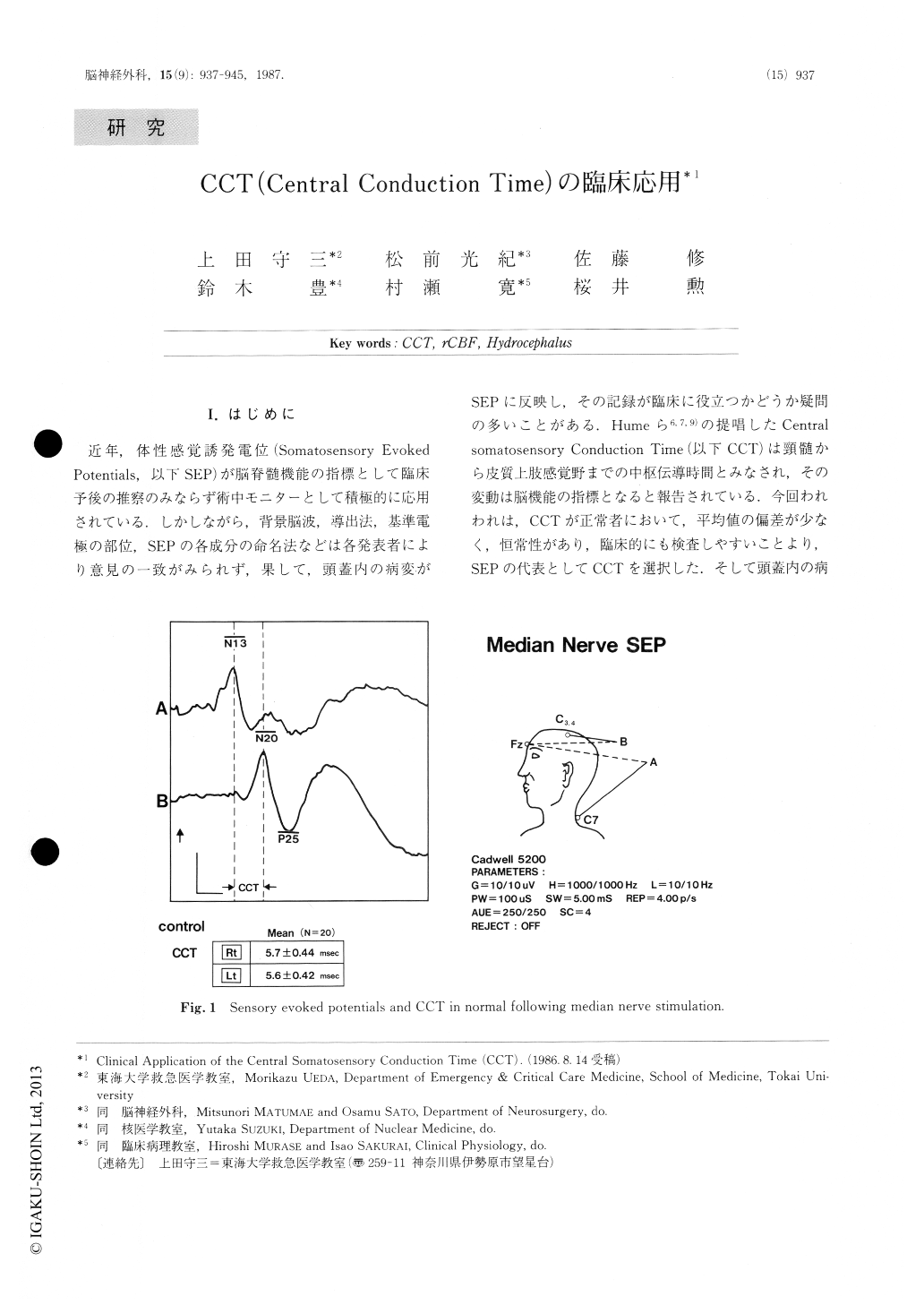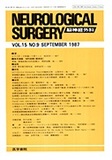Japanese
English
- 有料閲覧
- Abstract 文献概要
- 1ページ目 Look Inside
I.はじめに
近年,体性感覚誘発電位(Somatosensory EvokedPotentials,以下SEP)が脳脊髄機能の指標として臨床予後の推察のみならず術中モニターとして積極的に応用されている,しかしながら,背景脳波,導出法,基準電極の部位,SEPの各成分の命名法などは各発表者により意見の一致がみられず,果して,頭蓋内の病変がSEPに反映し,その記録が臨床に役立つかどうか疑問の多いことがある.Humeら6,7,9)の提唱したCentralsolnatosensory Conduction Time(以下CCT)は頸髄から皮質上肢感覚野までの中枢伝導時間とみなされ,その変動は脳機能の指標となると報告されている.今回われわれは,CCTが正常者において,平均値の偏差が少なく,恒常性があり,臨床的にも検査しやすいことより,SEPの代表としてCCTを選択した.そして頭蓋内の病態がCCTの変動にいかに関与しているか,逆にCCTを測定することによって病態の推察が可能であるかを臨床的に追求した.
We tried to prove the usefulness of CCT as an index of cerebral functions. CCT, regional cerebral blood flow (CBF) and CT scan findings were studied in 213 neurological patients with CVD (66 cases) , cerebral tumors (66 cases) and head traumas (81 cases) . The technique of CCT recording was modified from that of Jones (1977) using CADWELL 5200 system. CCT was defined as the difference of the peak latency between N13 recorded at the C-7 vertebral electrode and N20 recorded at the somatosensory cortex. The control CCT in normal volunteers (N = 20) was 5.7 ± 0.4 msec.

Copyright © 1987, Igaku-Shoin Ltd. All rights reserved.


